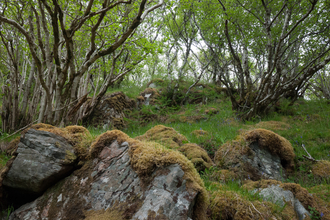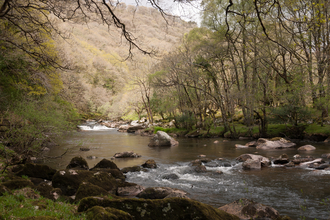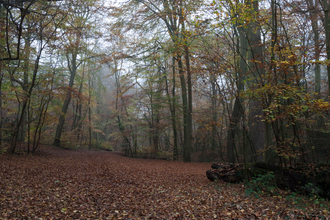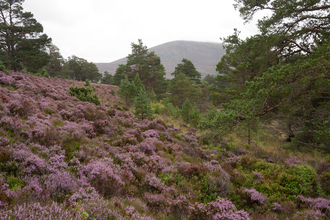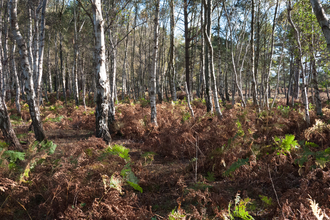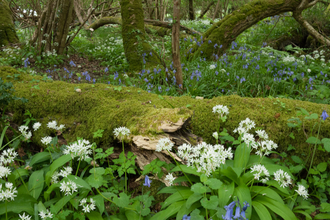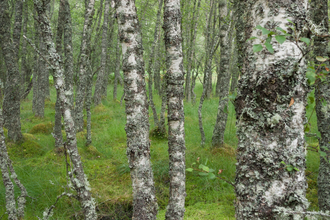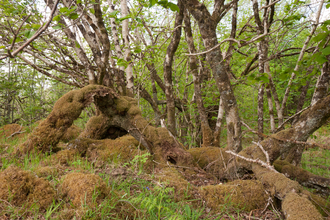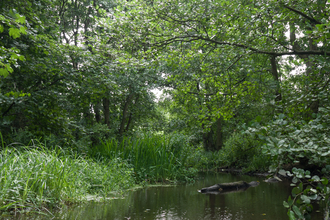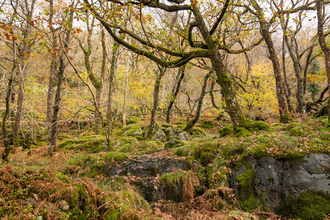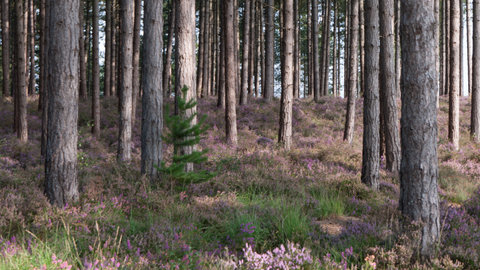
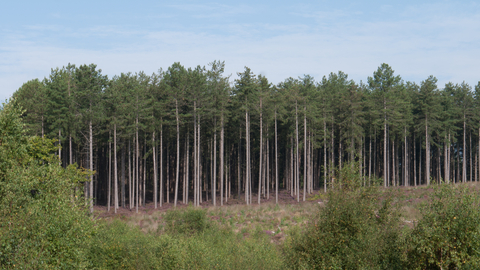
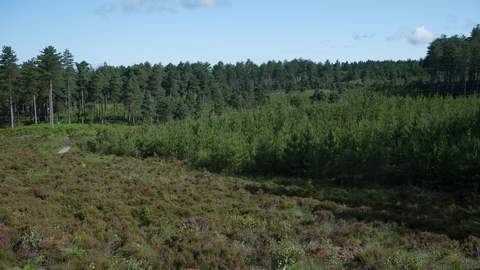
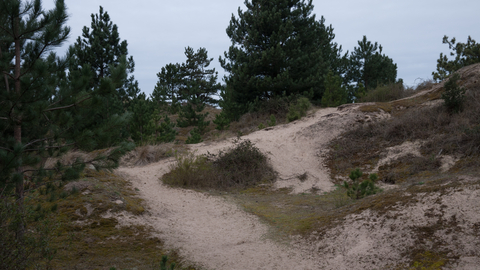
Coniferous plantation
What is it?
Generally planted either on the poor soils of heathland and bog or within existing, less profitable woodlands, coniferous plantations often lose many of the species characteristic of the preceding habitat. However, with appropriate management, existing plantations can support an interesting range of species, particularly where there is a diversity of age structure and patches of open habitat. Plantations have extended the natural range of some species, such as firecrest and common crossbill, while mosaics of plantation and open habitat may be particularly attractive to other species. For example, nightjar density can be particularly high where plantation and heathland meet. The deep shade and thick litter of dense plantations are hostile to most wildlife, but in thinned areas or along rides heathy species or bracken can persist, and an impoverished woodland flora can be found in plantations within woods. Although the lack of structure inhibits most birds, early growth stages can support species that favour scrub such as tree pipit.
Why is it like this?
By the end of the First World War, woodland cover in the UK had reached an all-time low of 5%, and afforestation was carried out to create a national reserve of timber. By the 1920s, large-scale afforestation had taken place in areas where poor soil fertility had precluded intensive agriculture, such as the New Forest, Thetford Forest and Cannock Chase. Foresters moved into the uplands to areas such as Kielder Forest and Dumfries– today Scotland holds almost one million hectares of forestry. This included much of the internationally important peatlands of the Flow Country in Scotland which was infamously ploughed and afforested in the 1980s using tax breaks and forestry grants. However, times have changed and today, nature conservation and recreation form part of the Forestry Commission’s remit. Some peatland areas are being restored while other habitats are being managed sympathetically for wildlife.
Distribution in the UK
Throughout the UK, particularly in the uplands. There is currently around 1.5 million ha.
What to look for
Clearings within woodland plantations can support rare butterflies such as pearl-bordered fritillary. Reptiles (including sand lizard and smooth snake within their range) can be found along open ride edges, while goshawk and osprey both nest in tall pines in plantations. Nightjar, long-eared owl and bats may be seen at dusk. In the uplands, young plantation may support black grouse and ground nesting raptors such as short-eared owls or hen harriers. Red squirrel can be quite easy to see in plantations in northern England and Scotland.
Conservation
The wildlife interest of coniferous plantation can be enhanced by creating plenty of edge habitat, ensuring there is a mosaic of clearfell, young plantation and old stands, and provision of buffers along water courses. Installation of bird and bat boxes can also increase biodiversity. The considerable size of many coniferous plantations provides scope for creating networks of restored and open habitat to increase connectivity and overall area, and many restoration projects are underway.

